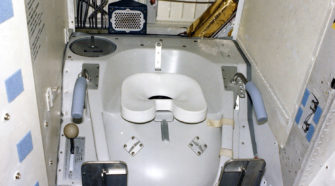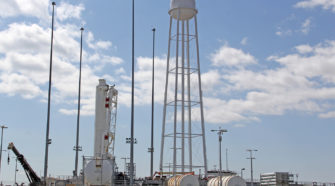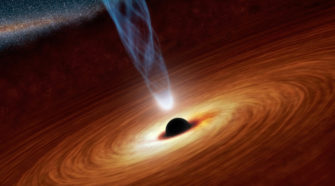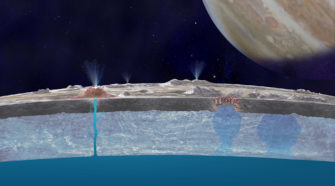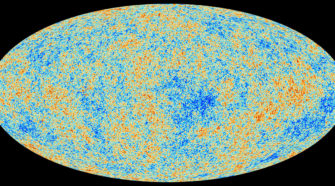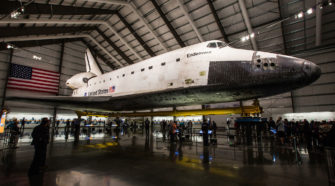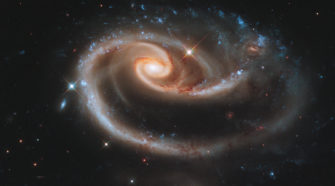Issue #2 (April 2013)
Evolution of the space toilet
When Alan Shepard first went into space, he wet his pants. There was no toilet and that was his only option. Scientists put their heads together and created the modern diaper. Before this event, people used cloth diapers. The crews of the Apollo missions were a bit luckier, with diapers, but it still wasn’t very …
Antares blast off set for mid April
NASA announced that the maiden flight of the private Antares rocket from Orbital Sciences Corp. is slated to soar to space between April 17 to 19 from the newly constructed seaside launch pad dubbed 0-A at the Mid-Atlantic Regional Spaceport at NASA’s Wallops Flight Facility in Virginia. The two stage Antares rocket serves as the …
NASA’s NuSTAR helps solve riddle of black hole spin
Two X-ray space observatories, NASA’s Nuclear Spectroscopic Telescope Array (NuSTAR) and the European Space Agency’s XMM-Newton, have teamed up to measure definitively, for the first time, the spin rate of a black hole with a mass two million times that of our Sun. The supermassive black hole lies at the dust- and gas-filled heart of …
A window into Europa’s ocean may be right at the surface
If you could lick the surface of Jupiter’s icy moon Europa, you would actually be sampling a bit of the ocean beneath. Mike Brown, an astronomer at the California Institute of Technology, and Kevin Hand from NASA’s Jet Propulsion Laboratory, have detailed the strongest evidence yet that salty water from the vast liquid ocean beneath …
Planck mission brings universe into sharp focus
The European Space Agency’s Planck space mission has released the most accurate and detailed map ever made of the oldest light in the universe, revealing new information about its age, contents and origins. The map results suggest the universe is expanding more slowly than scientists thought, and is 13.8 billion years old, 100 million years …
Kepler discovers smallest planet yet
NASA’s Kepler mission scientists have discovered a new planetary system that is home to the smallest planet yet found around a star similar to our sun. The planets are located in a system called Kepler-37, about 210 light-years from Earth in the constellation Lyra. The smallest planet, Kepler-37b, is slightly larger than our moon, measuring …
Endeavour to discover at the California Science Center
The California Science Center in Los Angeles is on a mission to inspire kids while also pursuing grand display plans for Space Shuttle Endeavour.
Hubble images a ‘Rose of Galaxies’
In celebration of the anniversary of the Hubble Space Telescope’s 1990 deployment into space, astronomers at the Space Telescope Science Institute in Baltimore, Md., pointed Hubble’s eye to an especially photogenic group of interacting galaxies called Arp 273. The larger of the spiral galaxies, known as UGC 1810, has a disk that is tidally distorted …

